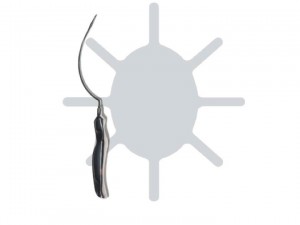Incisional hernia: fixation free repair

How it works:
The “tentacles” of the Octomesh implant are the key element, allowing for significant enhancements in terms of both surgical procedure and clinical results.
The implant is positioned in preperitoneal sublay, delivering the “tentacles” from the suprafascial layer through the abdominal wall muscles until the preperitoneal space by means of a proprietary passer needle. This small tunnel allows the strap to sit with friction within the tissues in a position that is far and lateral from the hernia opening. This was designed to assure a broad overlap of the mesh over the hernia opening.
In addition it gives tension-free fixation, yet be strong enough to ensure the mesh remains in place during early healing. In this way, the mesh is perfectly anchored by 8 “tentacles”.
15 days after surgery a traction force of more than 35 kg is needed to pull the implant out.
The concept of strap placement without sutures (Prof. Amato defines it “Freexation” because it uses the friction in the tissues crossed by the tentacles to ensure the implant stay in place fixation free) has been successfully used for several years in urinary stress incontinence procedures in women, with millions of operations performed to date.
Benefits for the Patients
The advantages for the patient are:
- Reduced wound opening, less surgical trauma and better cosmetic results
- Wide coverage of the hernia defect with consequent reduction of the recurrence rate
- Faster and easier procedure
- Low rate of intra and postoperative complications
- Absence of recurrences in a follow-up of 33 months